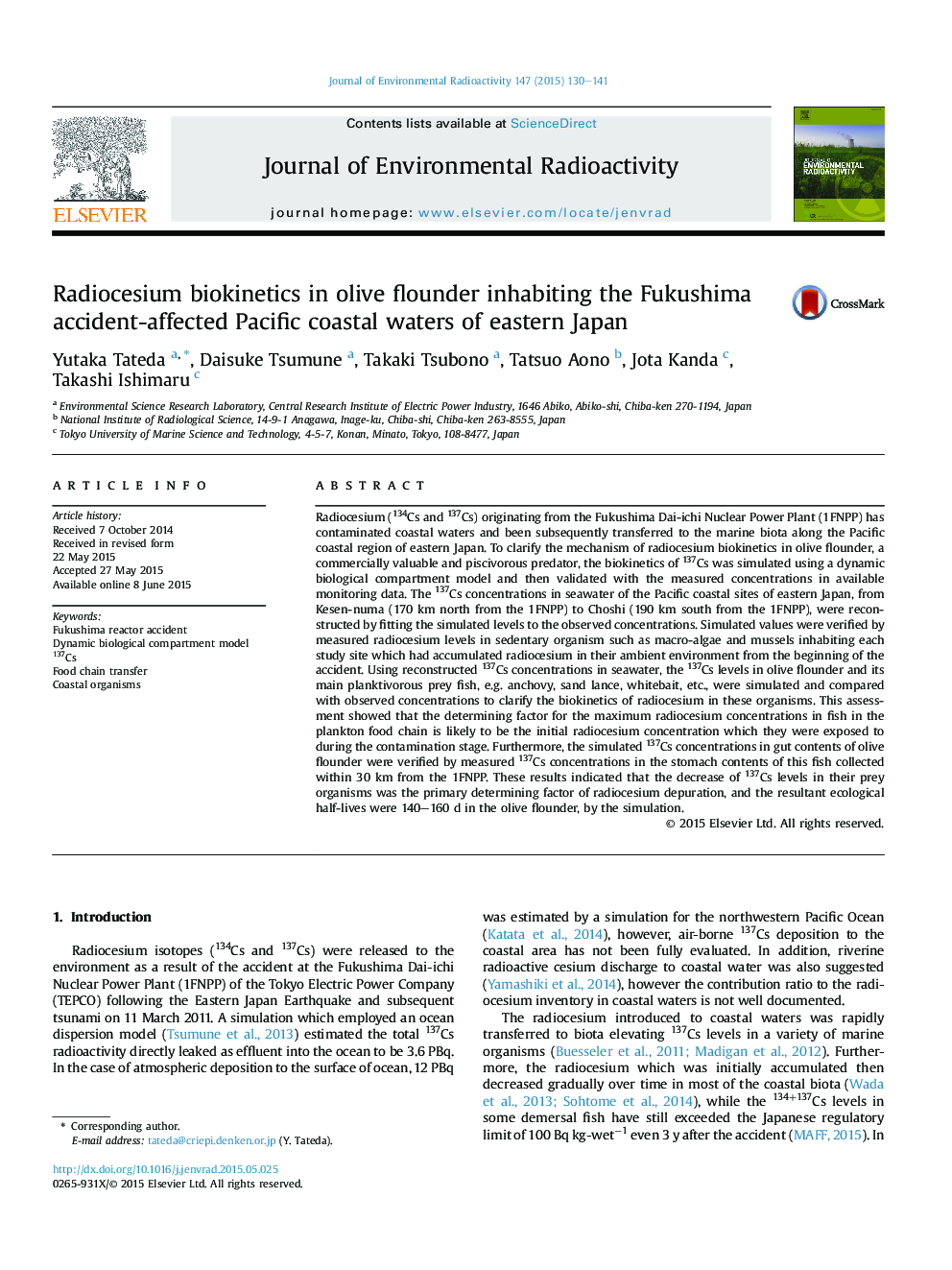| کد مقاله | کد نشریه | سال انتشار | مقاله انگلیسی | نسخه تمام متن |
|---|---|---|---|---|
| 1737857 | 1521586 | 2015 | 12 صفحه PDF | دانلود رایگان |

• Simulated Cs-137 levels in seawater were verified by macro-algae and mussels which were exposed to contaminated seawater from the initial phase.
• Cs-137 in the olive flounder in the coasts of eastern Japan were simulated using reconstructed seawater by a dynamic biological compartment model.
• The determining factor of the maximum Cs-137 levels in fish of plankton food chain was the initial exposed concentration during the contamination.
• The ecological half-lives were 5–6 months for olive flounder of the Pacific coastal waters during the second year after the accident.
• To reduce radiocesium levels in olive flounder under an emergency situation, reduction of the initial maximum seawater level was suggested.
Radiocesium (134Cs and 137Cs) originating from the Fukushima Dai-ichi Nuclear Power Plant (1FNPP) has contaminated coastal waters and been subsequently transferred to the marine biota along the Pacific coastal region of eastern Japan. To clarify the mechanism of radiocesium biokinetics in olive flounder, a commercially valuable and piscivorous predator, the biokinetics of 137Cs was simulated using a dynamic biological compartment model and then validated with the measured concentrations in available monitoring data. The 137Cs concentrations in seawater of the Pacific coastal sites of eastern Japan, from Kesen-numa (170 km north from the 1FNPP) to Choshi (190 km south from the 1FNPP), were reconstructed by fitting the simulated levels to the observed concentrations. Simulated values were verified by measured radiocesium levels in sedentary organism such as macro-algae and mussels inhabiting each study site which had accumulated radiocesium in their ambient environment from the beginning of the accident. Using reconstructed 137Cs concentrations in seawater, the 137Cs levels in olive flounder and its main planktivorous prey fish, e.g. anchovy, sand lance, whitebait, etc., were simulated and compared with observed concentrations to clarify the biokinetics of radiocesium in these organisms. This assessment showed that the determining factor for the maximum radiocesium concentrations in fish in the plankton food chain is likely to be the initial radiocesium concentration which they were exposed to during the contamination stage. Furthermore, the simulated 137Cs concentrations in gut contents of olive flounder were verified by measured 137Cs concentrations in the stomach contents of this fish collected within 30 km from the 1FNPP. These results indicated that the decrease of 137Cs levels in their prey organisms was the primary determining factor of radiocesium depuration, and the resultant ecological half-lives were 140–160 d in the olive flounder, by the simulation.
Journal: Journal of Environmental Radioactivity - Volume 147, September 2015, Pages 130–141